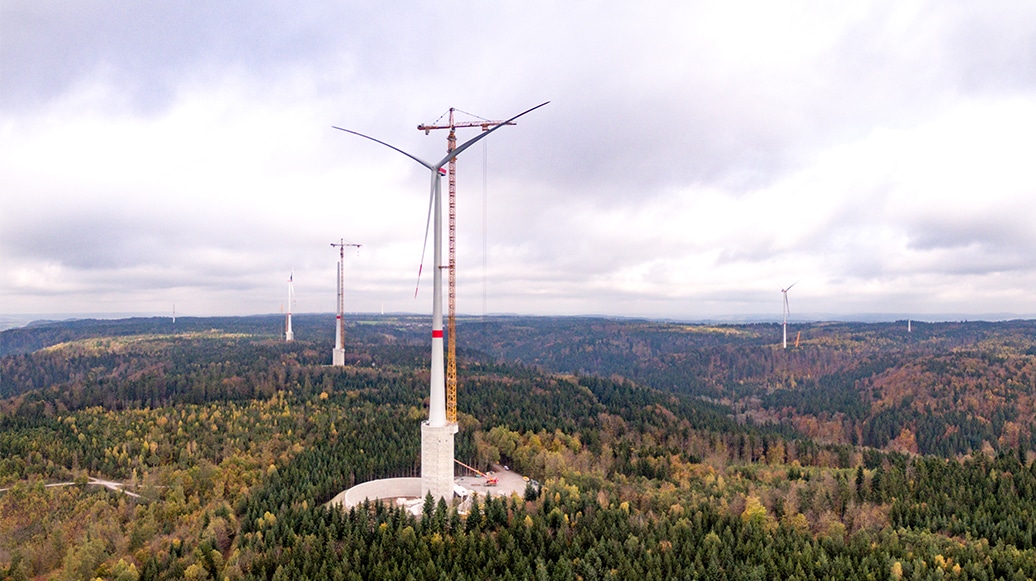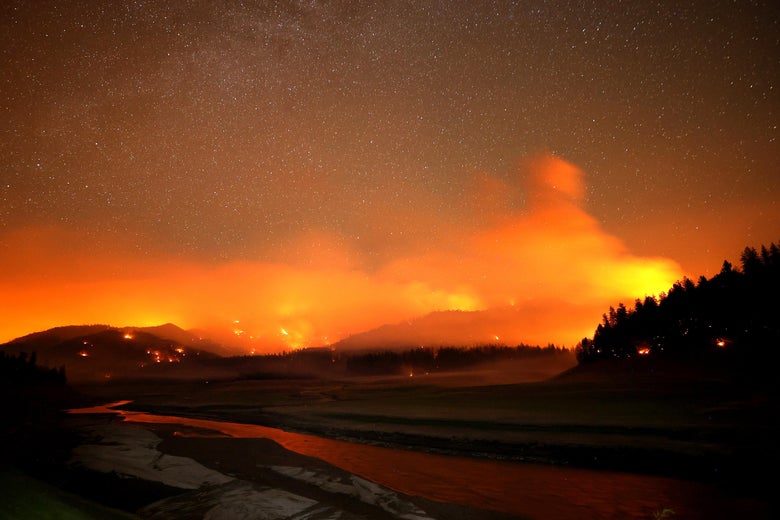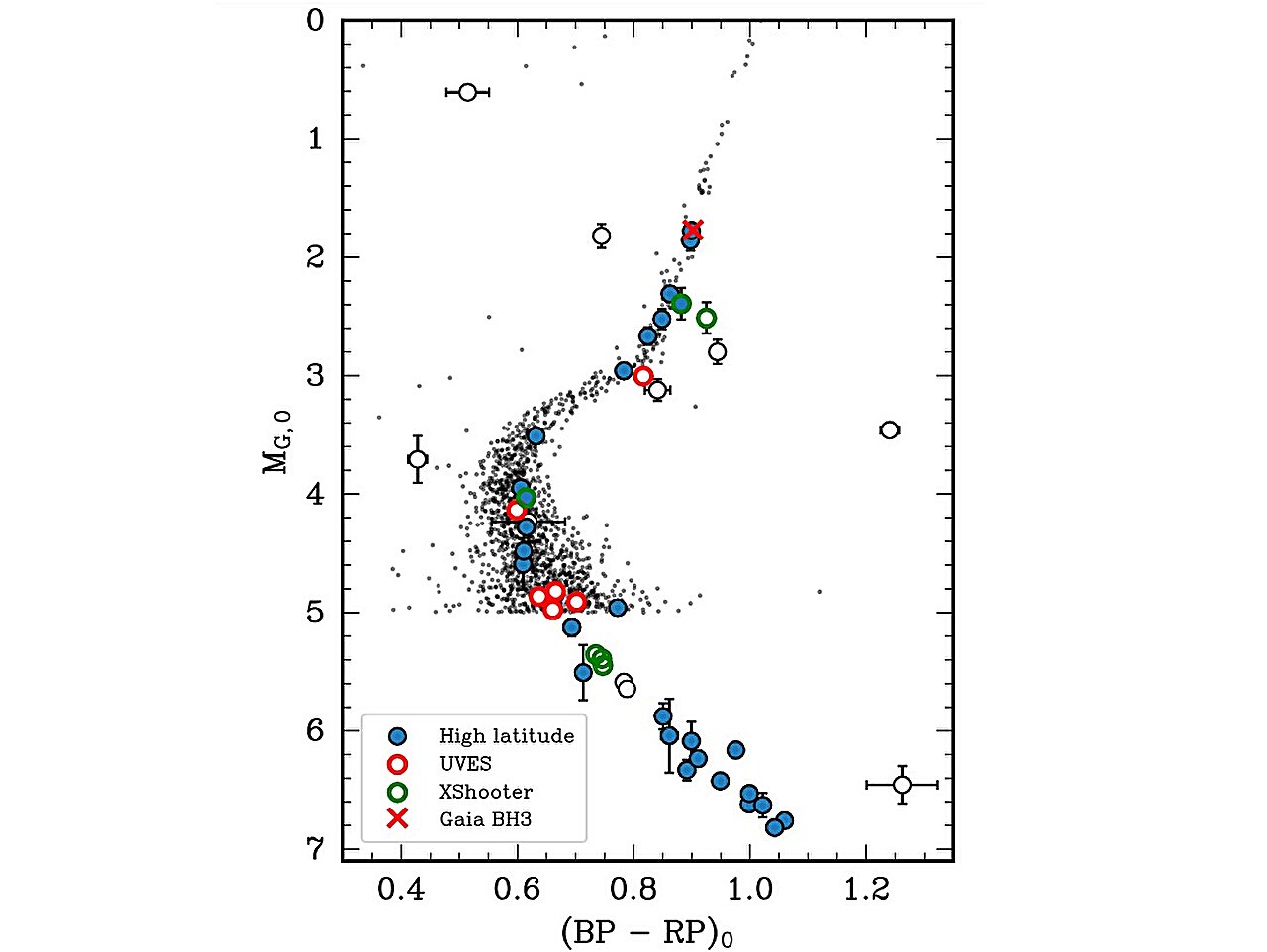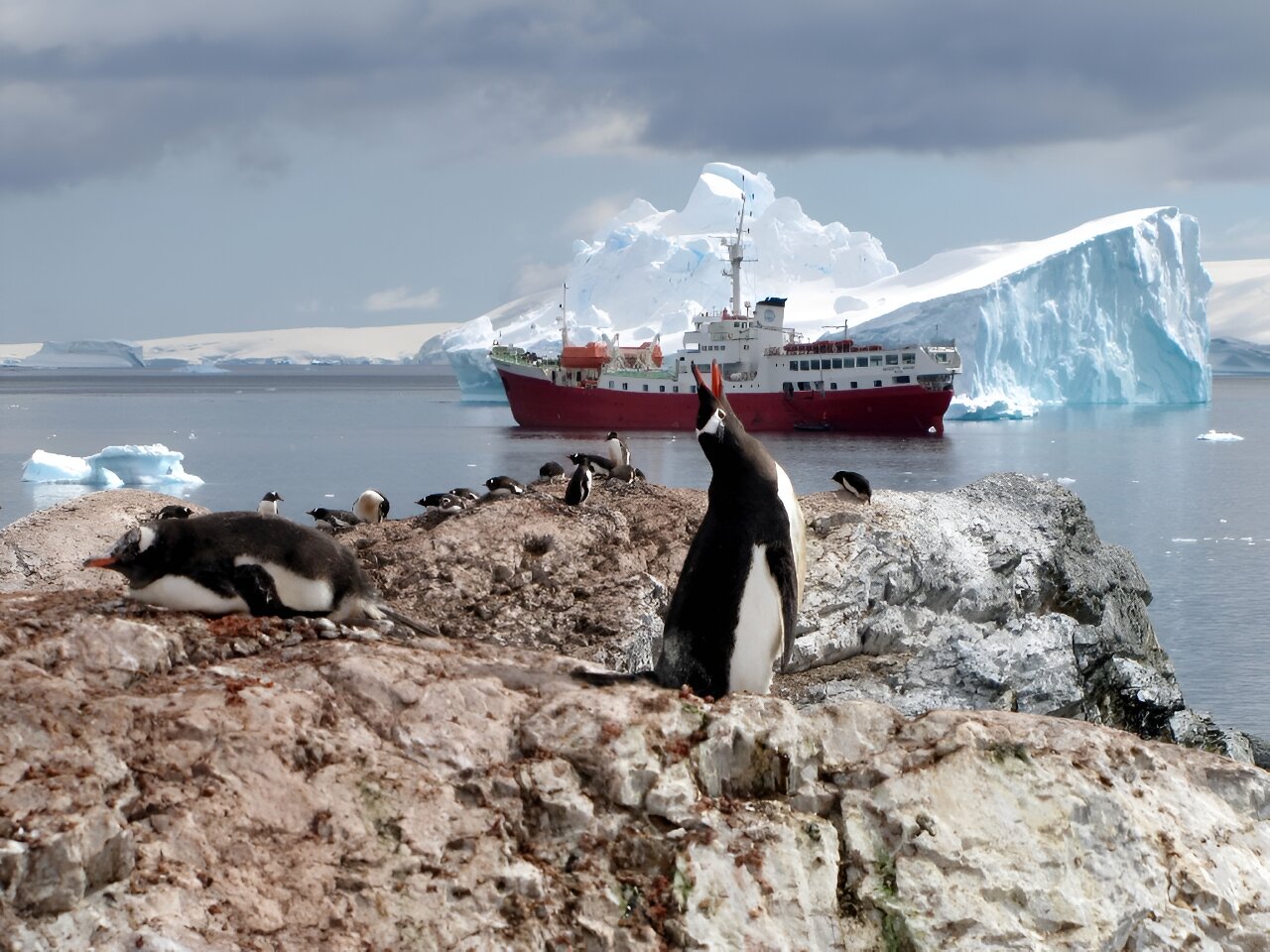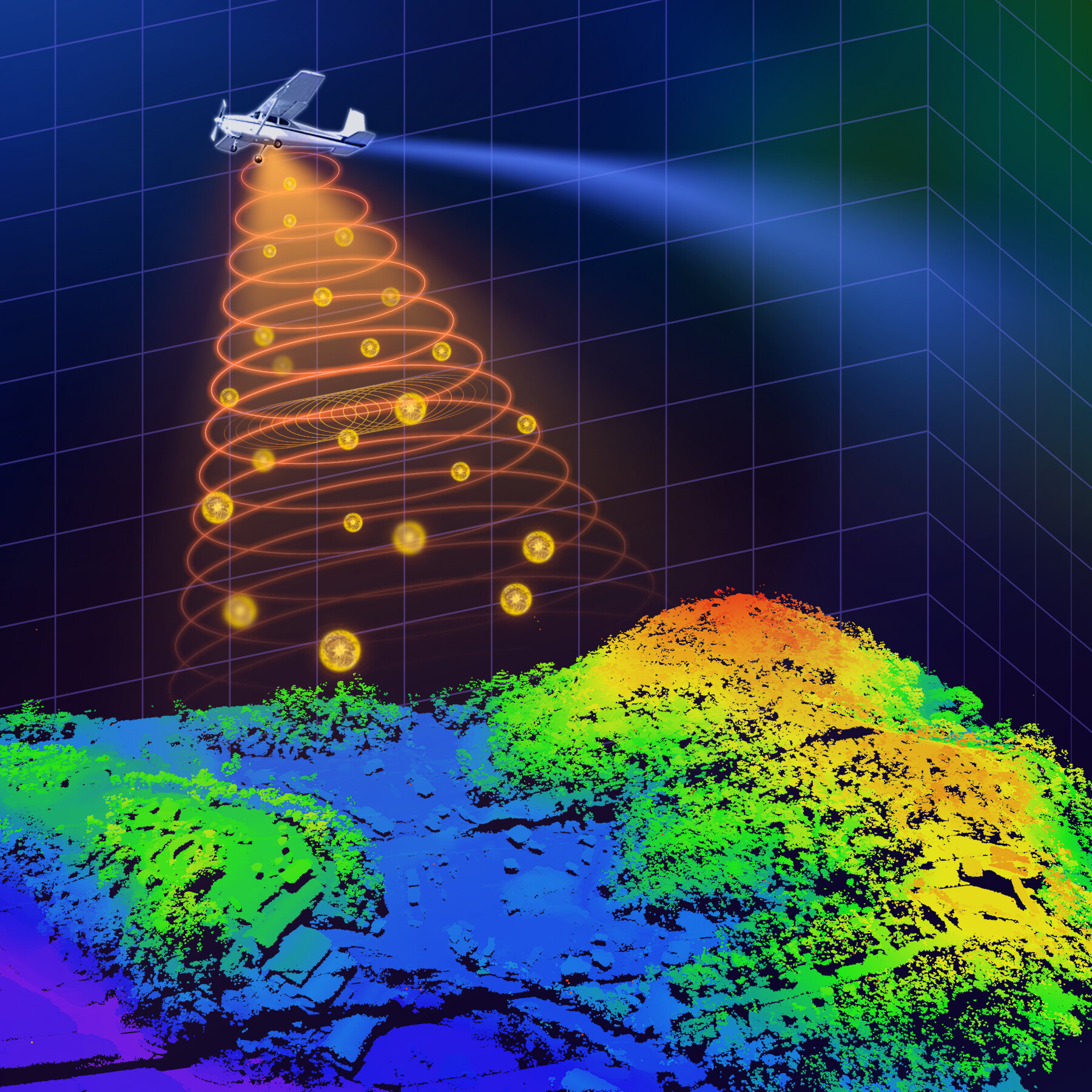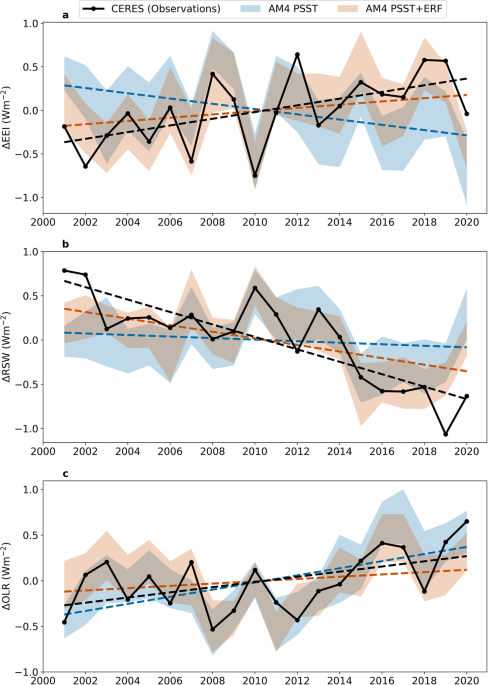
Anthropogenic forcing and response yield observed positive trend in Earth’s energy imbalance
Nature Communications volume 12, Article number: 4577 (2021 ) Cite this article
The observed trend in Earth’s energy imbalance (TEEI), a measure of the acceleration of heat uptake by the planet, is a fundamental indicator of perturbations to climate. Satellite observations (2001–2020) reveal a significant positive globally-averaged TEEI of 0.38 ± 0.24 Wm−2decade−1, but the contributing drivers have yet to be understood. Using climate model simulations, we show that it is exceptionally unlikely (<1% probability) that this trend can be explained by internal variability. Instead, TEEI is achieved only upon accounting for the increase in anthropogenic radiative forcing and the associated climate response. TEEI is driven by a large decrease in reflected solar radiation and a small increase in emitted infrared radiation. This is because recent changes in forcing and feedbacks are additive in the solar spectrum, while being nearly offset by each other in the infrared. We conclude that the satellite record provides clear evidence of a human-influenced climate system.
Earth’s energy imbalance (EEI) is the difference between the incoming solar radiation (S0), and the reflected shortwave radiation (RSW) plus the outgoing longwave radiation (OLR), at the top of the atmosphere1,2,3. Thus, EEI is a fundamental measure of the degree to which the Earth’s global climate system is out of balance. A trend in EEI measures the acceleration of heat uptake by the planet and hence is an indicator of perturbations to the coupled atmosphere-ocean-land-ice system4,5,6,7,8. The mean EEI during 2005–2015 was estimated to be 0.71 ± 0.10 Wm−2. Oceans store 90% of this excess heat9. Because of this close relationship between EEI and ocean heating, EEI trends have an important bearing on the warming of the global climate system, sea-level rise, and marine health3. In addition, understanding historical trends in EEI and its components improves the modeling of the projections of future climate change10,11, which in turn forms the basis for policymaking and mitigation efforts12.

